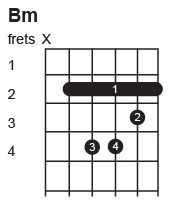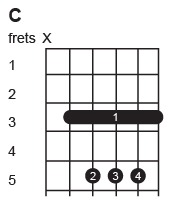There are no items in your cart
Add More
Add More
| Item Details | Price | ||
|---|---|---|---|
By Tony Das Published on: Wed Apr 20, 2022
We play 16 strokes for 4 clicks of the metronome. There are many songs that require you to break up the 4 clicks, to get finer levels of control over the beats played in the middle. The fun part of this exercise is when we leave out or drop notes in the 16 counts, which gives us different rhythmic feels and grooves.

A celebrated guitarist who has performed with well-known bands for two decades, your teacher is a professional musician who has played at some of the biggest music festivals in India, and toured the UK and the Gulf as well. As a guitarist, bassist and singer, he has worked on several film scores and movie songs.
If you’ve read through the previous posts and practised what you learnt, you would be familiar with upstrokes and how to work them into your rhythmic playing by counting them as the ‘&s’ between the numbers: 1 & 2 & 3 & 4 &. This translates to 8 strokes for every 4 clicks of your metronome.
To play sixteenth note rhythms, we simply double the count; that is 16 strokes for 4 clicks of the metronome. You can try this using the G Major Chord and your metronome app.

One of the objectives of this exercise is to improve speed while maintaining fluency in strumming, to develop a solid rhythm technique. There are many songs that require you to break up the 4 clicks of the metronome into 16 counts, to get finer levels of control over the beats played in the middle.
The real fun part of this exercise is when we start to leave out or drop notes in the 16 counts, which gives us different rhythmic feels and grooves. To illustrate this, let’s take the song “Torn” by Natalie Imbruglia. The use of this song is purely for educational purposes, so that you get comfortable with playing sixteenth note rhythms.
This song uses the chords G Major, B Minor, and C Major (which you would be familiar with by now), along with a technique that was covered earlier – left-hand muting.



The strumming pattern for the song is illustrated below, with ‘D’ representing a downstroke, ‘U’ an upstroke, and ‘X’ a muted note.

By placing these muted notes in unusual positions in the sixteenth note rhythm, you can arrive at interesting grooves. This is the advantage of having your picking at double the speed as before. One word of caution though is to remember not to tense up your hands. The natural response in such situations is to grip the pick harder, but instead you should instead try to relax the grip a bit more.
If you have your guitar and metronome app handy, practise the sixteenth note rhythms and ensure there is accuracy in your play even at faster tempos. These exercises are a great way to improve your strumming technique. In the next post, we’ll look at two popular scales – the A Minor Pentatonic and Blues scales. Continue reading, practising and perfecting your guitar techniques.